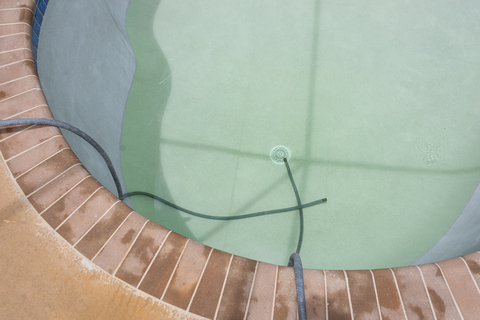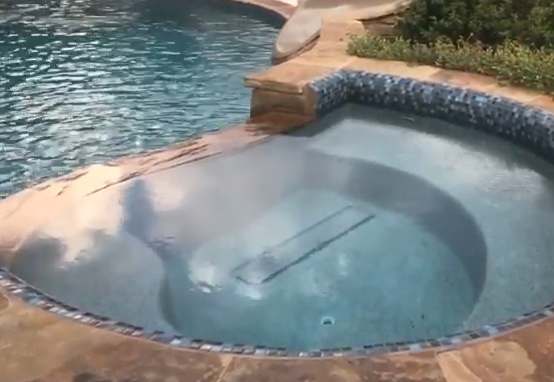ARTICLES
Advance Search
Aquatic Health
Aquatic Health, Fitness & Safety
Around the Internet
Aquatic Culture
Aquatic Technology
Artful Endeavors
Celebrity Corner
Life Aquatic
Must-See Watershapes
People with Cameras
Watershapes in the Headlines
Art/Architectural History
Book & Media Reviews
Commentaries, Interviews & Profiles
Concrete Science
Environment
Fountains
Geotechnical
Join the Dialogue
Landscape, Plants, Hardscape & Decks
Lighter Side
Ripples
Test Your Knowledge
The Aquatic Quiz
Other Waterfeatures (from birdbaths to lakes)
Outdoor Living, Fire Features, Amenities & Lighting
Plants
Ponds, Streams & Waterfalls
Pools & Spas
Professional Watershaping
Structures (Editor's Notes)
Travelogues & History
Water Chemistry
WaterShapes TV
WaterShapes World Blog
Web Links
Around the Internet
Aquatic Culture
Aquatic Technology
Artful Endeavors
Celebrity Corner
Life Aquatic
Must-See Watershapes
People with Cameras
Watershapes in the Headlines
While in Venice, Italy, last summer, I came across a most unusual fountain in the Biennale Gardens near the city's historic Arsenale: It's a tall, slightly overgrown tribute to Giuseppe Garibaldi, the Italian general, politician and nationalist who is counted among the founding fathers of the modern Italy.
I almost put the word fountain in quotation marks in the first sentence above, because the structure's water flows in an unusual way: While I'm reasonably certain the imposing tower of volcanic stone, granite boulders and bronze statuary once had internal plumbing and flowed with the greater elegance befitting such a tribute, it now flows through bands of black tubing interrupted in places by dribbling spouts.
The odd effect is that the monument seems to be watered by an ordinary drip-irrigation system that keeps its plants green and aerates the turtle-filled basin at its base.
I know that resources for restoration of even relatively intact artworks are scarce in Italy in general and especially in Venice, where life is a constant struggle to keep everything operational in the face of a combination of rising seawater and subsiding ground. But it's sad and a bit dispiriting that funds apparently aren't available for more than a stop-gap fix for a monument of this prominence and grandeur.
But no matter: The fix works, and I still enjoyed seeing the monument, which was completed between 1885 and 1887 by Augusto Benvenuti, a local artist and sculptor.
My guess is that it stands nearly 30 feet tall, with Garibaldi, flamboyantly attired, standing at its peak. Beneath him is a lion - the most accessible and impressive figure in the composition - as befits its being in Venice, where these beasts are iconic fixtures almost everywhere. Behind and below Garibaldi is a soldier attired in a uniform of the sort worn by Garibaldi's troops.
I haven't been able to determine if there are any plans to repair the fountain and restore it to a more elegant form, but I'll hold onto that hope. In the meantime, the monument is worth a visit - if only to marvel at the beautiful turtles!
Taking control of the plastering process is within reach of any quality-oriented designer or builder, declares Kim Skinner. To help you on your way, he offers this step-by-step guide to managing what should happen on site before, during and after plaster application takes place.
Many of the projects we work on could best be classified as show-stoppers: big, elaborate installations with undulating surfaces, multiple planes intersecting at odd angles and elaborate mosaic patterns - interior finishes with a level of technical difficulty that makes lots of tile applicators head in the other direction at a rapid clip. We at Rock Solid Tile (Calabasas, Calif.) enjoy just that sort of technical challenge. It's why we invest so much time in training, take our work so seriously and keep expanding the range of what we can accomplish for our clients. But truth be told, we occasionally like tackling installations where
It's happened before: I'll write one of these blogs or a Travelogue, and within a few minutes of releasing the newsletter a reader will send me something that either adds to, explains or (rarely, thank goodness) contradicts something I've written. Back in December, for instance, I wrote about the
‘It seems that everyone’s talking about “sustainability” these days, with the usual thought being that, as exterior designers, good environmental stewardship must be one of our main missions.’ That’s the way Bruce Zaretsky opened his On the Level column five years ago before asking a string of key questions: ‘But what is sustainability? What do watershapers need to do to encompass this philosophy? As important, what does it mean to our clients, and where are
Wrapping up his series on a comprehensive approach to healthier pool water, John Cohen goes into great detail in defining system components and making specific product recommendations.
They say a picture is worth a thousand words. In the case of this project, that old truism was right on the mark. From the start, what my clients seemed to want most was to look at every image I could muster and ask questions and make comments about each one. And it worked: Through their words and body language during these sessions, they offered me almost all of the information I had to have to deliver precisely what they wanted. And that was great, because when I
For the past ten years or so, high-end designers and builders have focused extensively on hiding things that disrupt a viewer's visual pleasure or violate the clean lines and sleek surfaces they've lavished on their watershapes. This may be why you see so few diving boards and slides these days. It may also be a contributing factor in the speed
The three most recent editions of WaterShapes have carried trailblazing articles by John Cohen on his quest to define and develop a toxin-free approach to swimming pool and spa water. I offered no comment when the series started, basically because the articles had to stand straight and tall on their own - but also because
Tireless in his quest for information about and approaches to the creation of toxin-free pools and spas, John Cohen has spent years weighing observations of nature and the human body and figuring out ways to use what he's learned to help people swim in pure, clean, safe water.





















